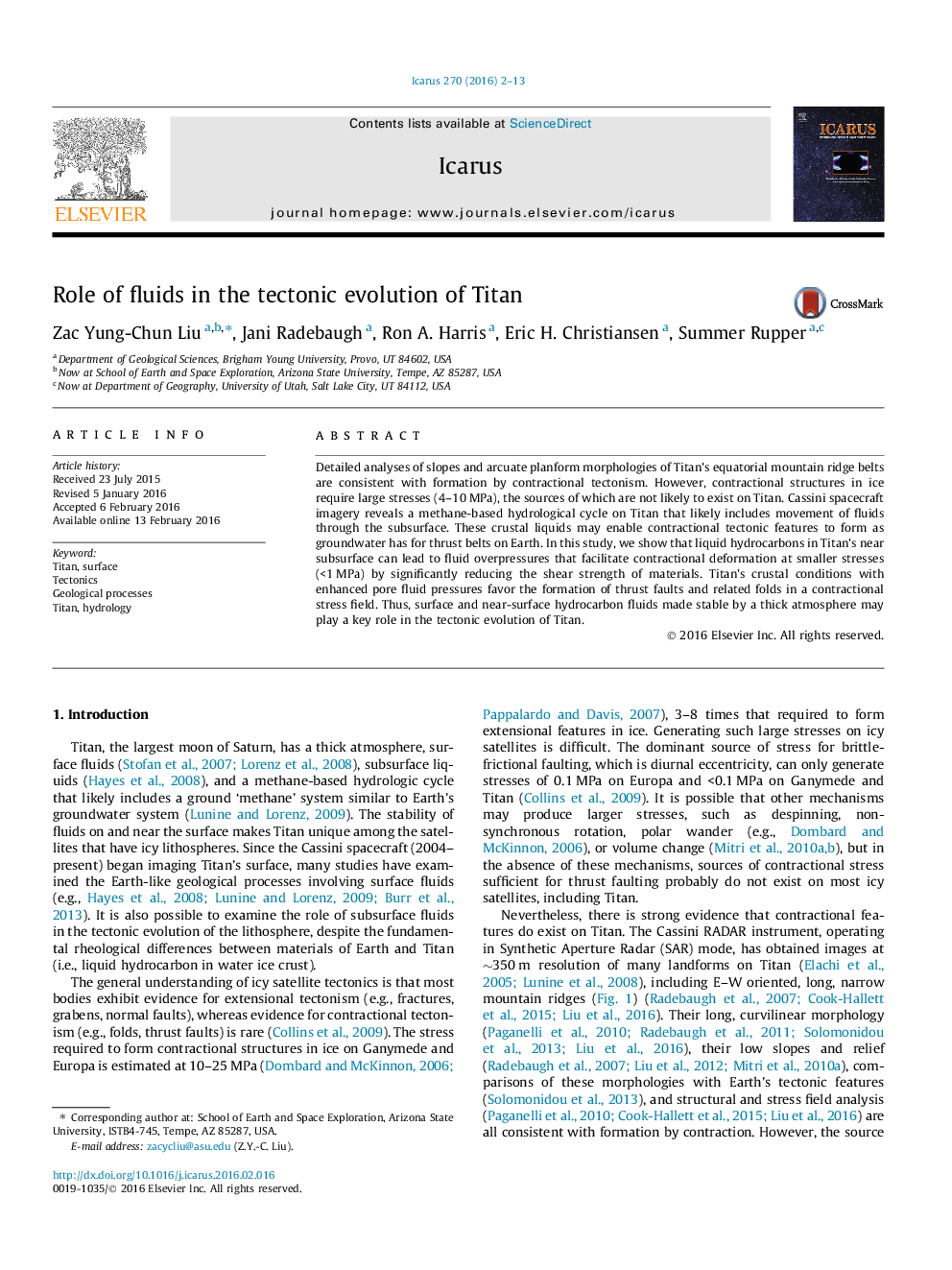| کد مقاله | کد نشریه | سال انتشار | مقاله انگلیسی | نسخه تمام متن |
|---|---|---|---|---|
| 1772923 | 1523520 | 2016 | 12 صفحه PDF | دانلود رایگان |
• There is strong geomorphologic evidence of contraction building ridges on Titan.
• Liquid hydrocarbons in the subsurface can create high pore fluid pressure.
• With enhanced fluid pressure, the formation of décollement and thin-skinned deformation is possible.
• Titan’s crustal liquids play a key role in its tectonic history, which is similar to that of water on Earth.
Detailed analyses of slopes and arcuate planform morphologies of Titan’s equatorial mountain ridge belts are consistent with formation by contractional tectonism. However, contractional structures in ice require large stresses (4–10 MPa), the sources of which are not likely to exist on Titan. Cassini spacecraft imagery reveals a methane-based hydrological cycle on Titan that likely includes movement of fluids through the subsurface. These crustal liquids may enable contractional tectonic features to form as groundwater has for thrust belts on Earth. In this study, we show that liquid hydrocarbons in Titan’s near subsurface can lead to fluid overpressures that facilitate contractional deformation at smaller stresses (<1 MPa) by significantly reducing the shear strength of materials. Titan’s crustal conditions with enhanced pore fluid pressures favor the formation of thrust faults and related folds in a contractional stress field. Thus, surface and near-surface hydrocarbon fluids made stable by a thick atmosphere may play a key role in the tectonic evolution of Titan.
Journal: Icarus - Volume 270, 15 May 2016, Pages 2–13
